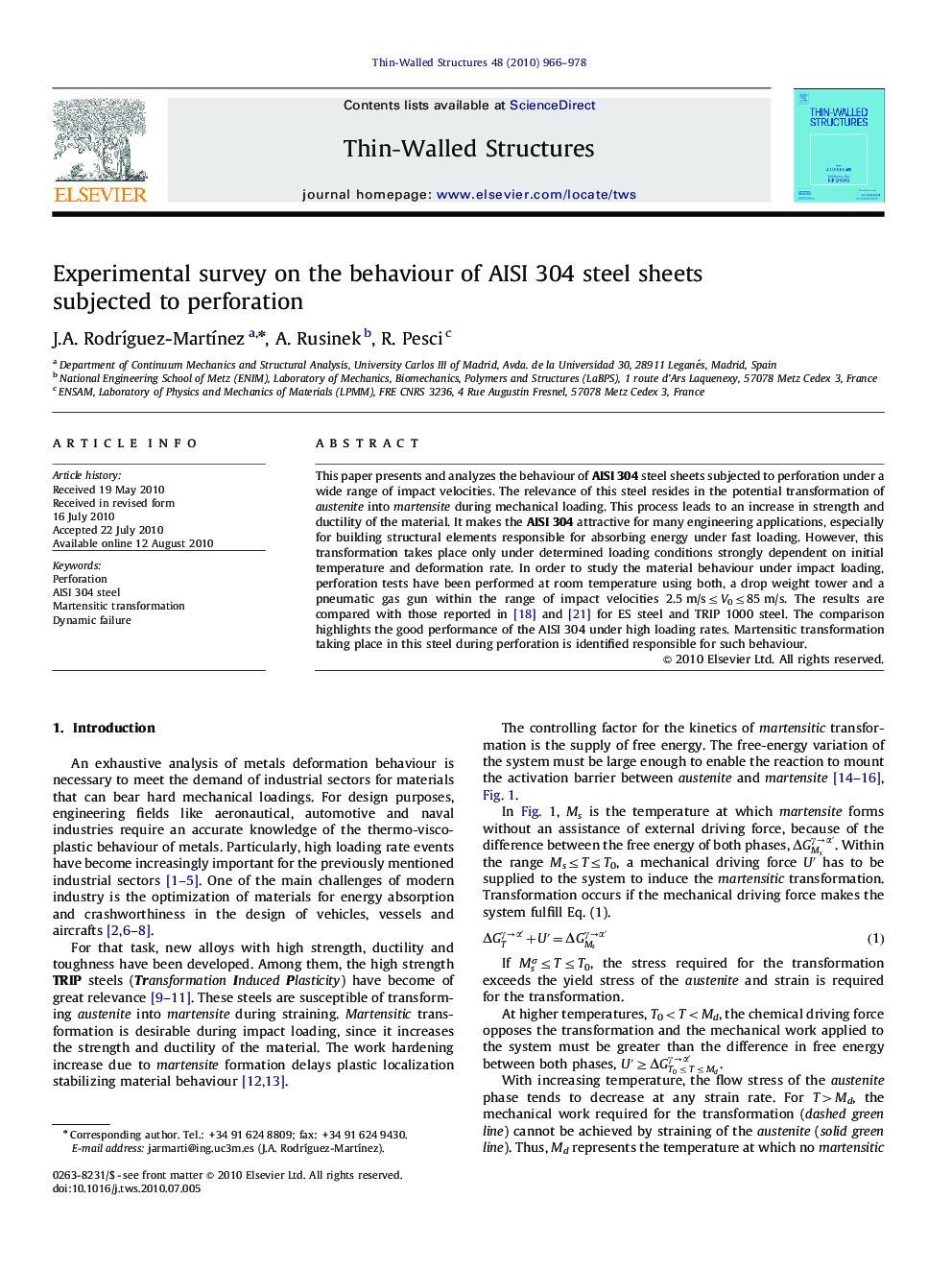| Article ID | Journal | Published Year | Pages | File Type |
|---|---|---|---|---|
| 309519 | Thin-Walled Structures | 2010 | 13 Pages |
This paper presents and analyzes the behaviour of AISI 304 steel sheets subjected to perforation under a wide range of impact velocities. The relevance of this steel resides in the potential transformation of austenite into martensite during mechanical loading. This process leads to an increase in strength and ductility of the material. It makes the AISI 304 attractive for many engineering applications, especially for building structural elements responsible for absorbing energy under fast loading. However, this transformation takes place only under determined loading conditions strongly dependent on initial temperature and deformation rate. In order to study the material behaviour under impact loading, perforation tests have been performed at room temperature using both, a drop weight tower and a pneumatic gas gun within the range of impact velocities 2.5 m/s≤V0≤85 m/s. The results are compared with those reported in [18] and [21] for ES steel and TRIP 1000 steel. The comparison highlights the good performance of the AISI 304 under high loading rates. Martensitic transformation taking place in this steel during perforation is identified responsible for such behaviour.
